Moroccan cuisine is renowned for its rich flavors, aromatic spices, and diverse influences, reflecting the country’s history and geography.
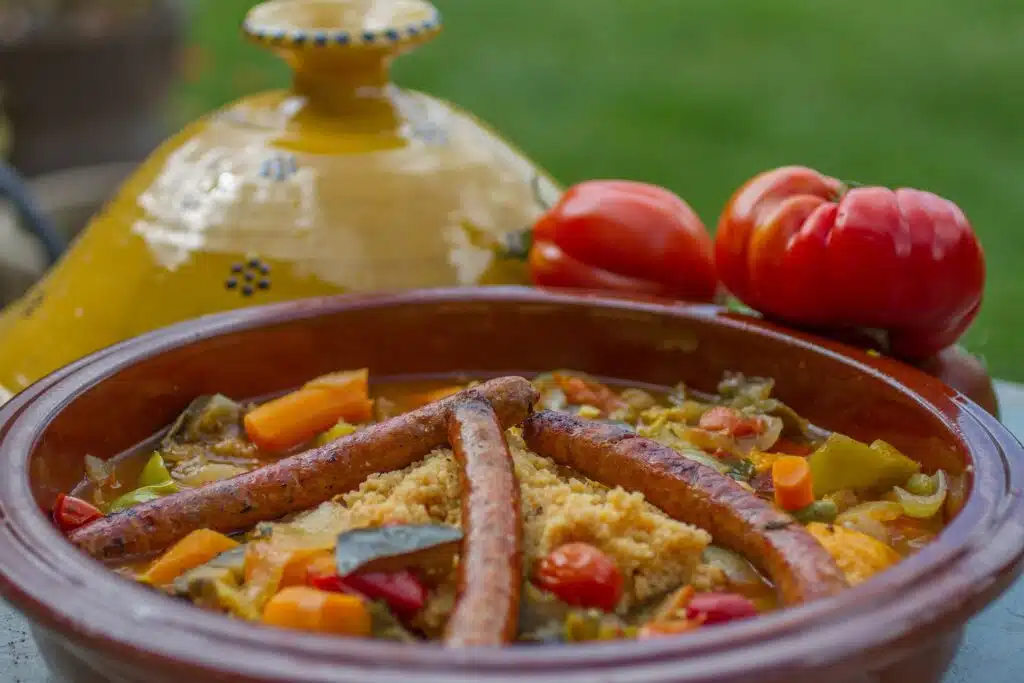
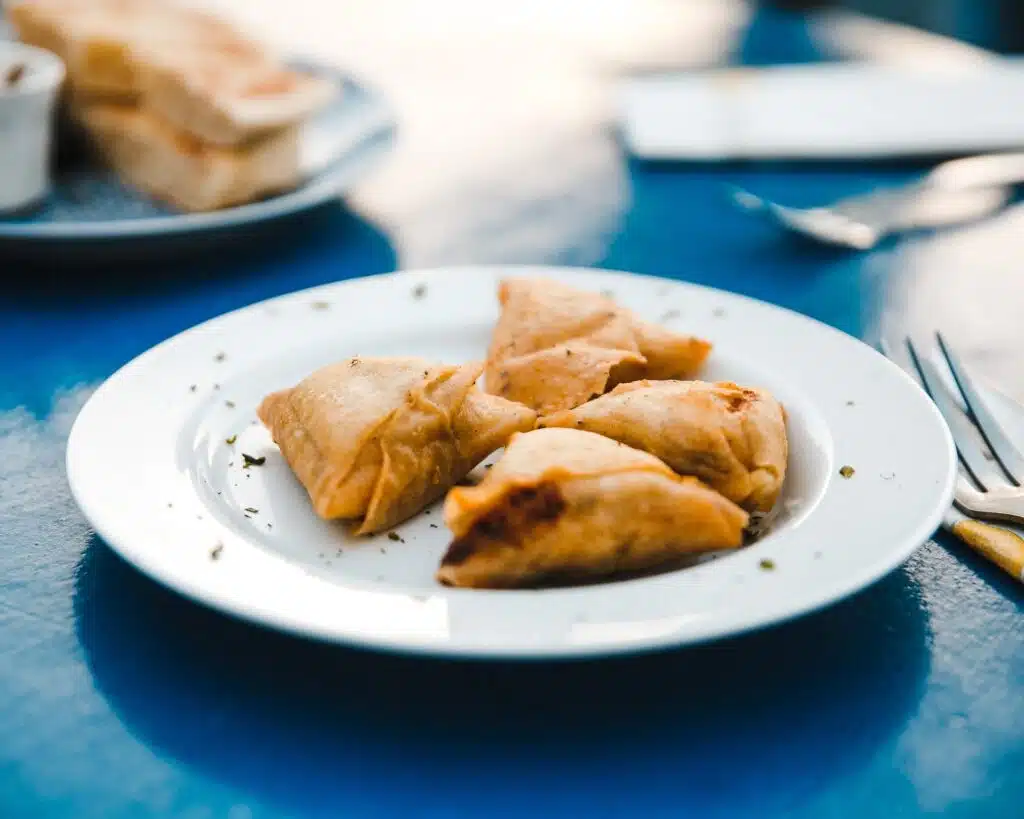
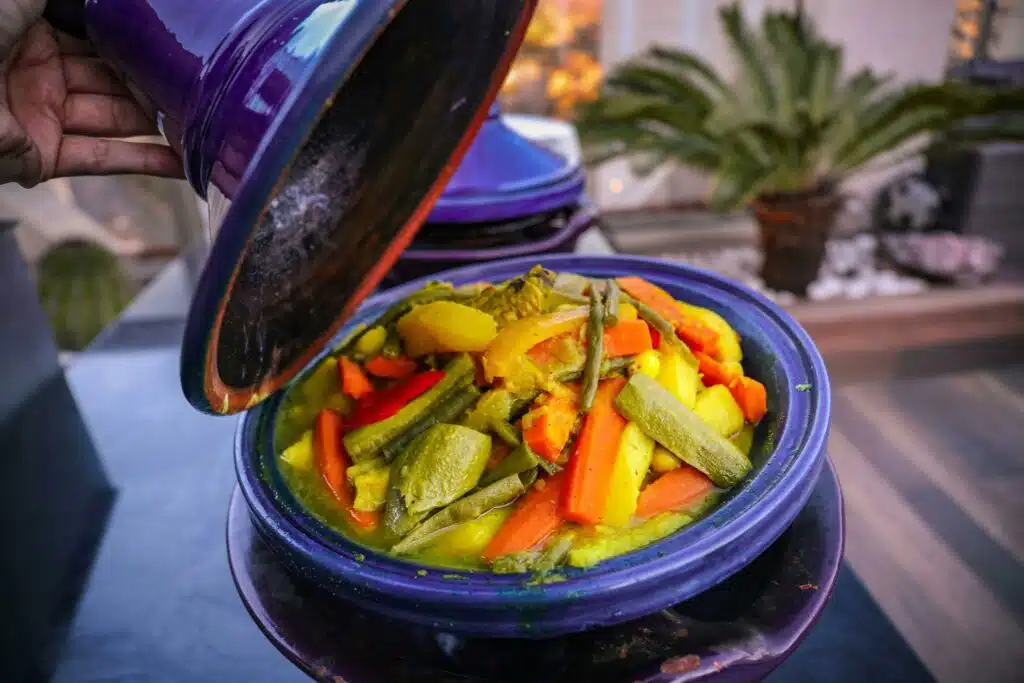
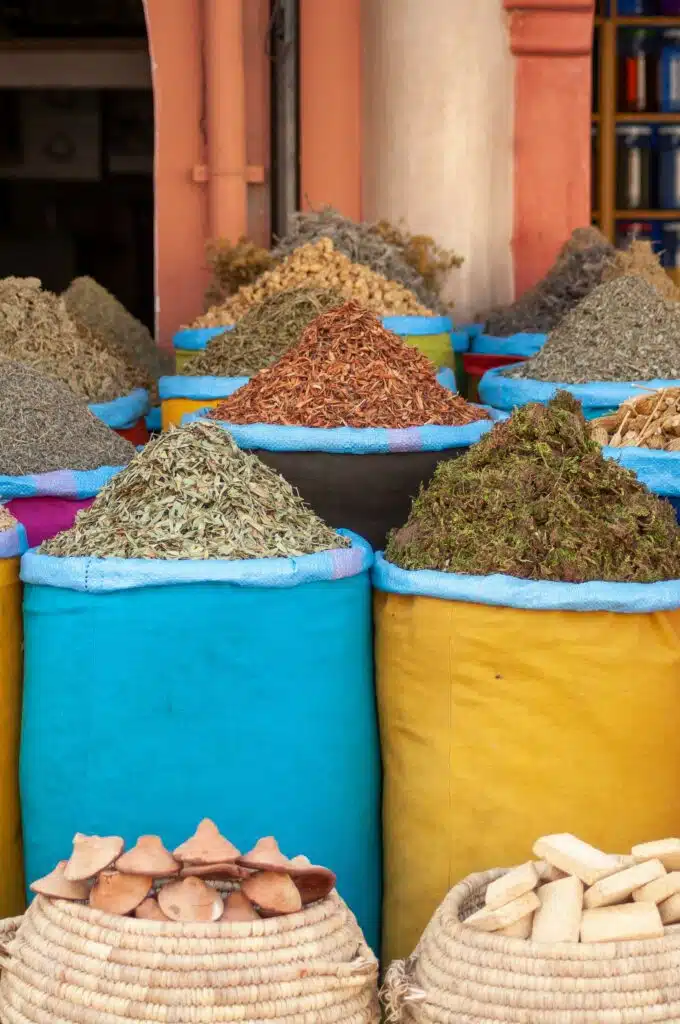
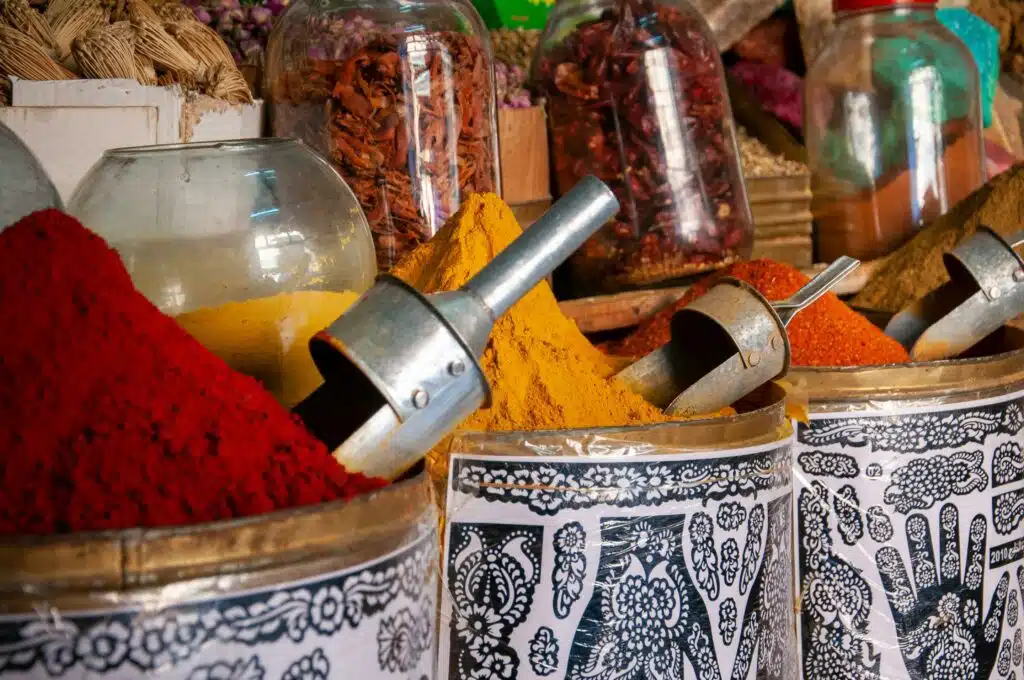
Key Ingredients and Flavors of the Moroccan cuisine
- Spices: Essential spices include cumin, cinnamon, turmeric, ginger, paprika, and saffron, creating layers of complexity and depth in dishes.
- Herbs: Fresh herbs like parsley, cilantro, and mint are used abundantly, adding freshness and vibrancy to many dishes.
- Tagine: A signature Moroccan dish cooked in a clay pot of the same name, combining meat (often lamb or chicken), vegetables, fruits (like apricots or prunes), and spices, slow-cooked to tender perfection.
- Couscous: A staple grain dish made from semolina, typically steamed and served with a variety of vegetables, meats, or fish, often flavored with a rich broth.
- Harira: A hearty soup traditionally served during Ramadan, made with tomatoes, lentils, chickpeas, and lamb or beef, seasoned with spices and herbs.
- Pastilla: A savory-sweet pastry filled with pigeon or chicken, almonds, and eggs, dusted with powdered sugar and cinnamon—a delightful blend of flavors.
- Moroccan Salads: Fresh salads featuring ingredients like tomatoes, cucumbers, peppers, and olives, often dressed with olive oil, lemon juice, and herbs.
- Mint Tea: A ubiquitous beverage served throughout Morocco, sweetened with sugar and poured from a height to create froth—a symbol of hospitality.
Culinary Influences of the moroccan cuisine
- Berber: Indigenous flavors and ingredients from Morocco’s Berber communities, emphasizing grains, dairy, and locally sourced meats.
- Arab: Islamic influence introduced spices, dried fruits, and nuts, shaping the foundation of many Moroccan dishes.
- Andalusian: Spanish influence brought ingredients like tomatoes, peppers, and citrus fruits, adding vibrancy to Moroccan cuisine.
- French: Colonial influence introduced techniques like patisserie and added refinement to Moroccan dining.
Dining Culture
- Family and Community: Meals are often communal, with dishes served in large platters for sharing, reinforcing social bonds.
- Traditions: Eating with the right hand, using bread (khobz) to scoop up food, and savoring multiple courses are traditional practices.
Indulging in Moroccan Desserts
Moroccan desserts are a delightful fusion of rich flavors, aromatic spices, and diverse textures, offering a perfect end to any meal. Here’s a look at some of the most beloved Moroccan sweets:
Key Moroccan Desserts
- Chebakia:
- Description: Flower-shaped fried dough coated in honey and sesame seeds.
- Flavors: Sweet, with hints of anise, cinnamon, and orange blossom water.
- Occasions: Often enjoyed during Ramadan and festive celebrations.
- M’hanncha (Snake Cake):
- Description: A coiled pastry made from phyllo dough, filled with almond paste and flavored with orange blossom water.
- Flavors: Nutty and aromatic, with a delicate, crispy texture.
- Presentation: Often dusted with powdered sugar and sliced like a cake.
- Kaab el Ghazal (Gazelle Horns):
- Description: Crescent-shaped cookies filled with almond paste and flavored with orange blossom water.
- Flavors: Subtly sweet and nutty, with a soft, chewy texture.
- Appearance: Shaped like delicate horns, representing elegance and tradition.
- Seffa:
- Description: Sweet couscous or vermicelli, steamed and topped with powdered sugar, cinnamon, and almonds.
- Flavors: Lightly sweet, with a pleasant contrast between the fluffy couscous and crunchy almonds.
- Occasions: Served during special occasions and family gatherings.
- Sellou (Sfouf):
- Description: A dense, nutty confection made from roasted flour, almonds, sesame seeds, and honey.
- Flavors: Rich and slightly sweet, with a crumbly texture.
- Traditions: Popular during Ramadan and given to new mothers for energy and nourishment.
- Ghriba:
- Description: Crumbly cookies made from almonds or coconut, often flavored with lemon zest or vanilla.
- Flavors: Sweet and nutty, with a melt-in-your-mouth texture.
- Varieties: Numerous variations exist, including ones with semolina and sesame seeds.
- Baghrir (Moroccan Pancakes):
- Description: Spongy pancakes with numerous small holes, often served with honey and butter.
- Flavors: Lightly sweet, perfect for absorbing the flavors of the honey-butter sauce.
- Serving: Commonly enjoyed for breakfast or as a snack.
Moroccan cuisine captivates with its bold flavors, aromatic spices, and rich cultural heritage, making every meal a delightful exploration of tradition and taste.










